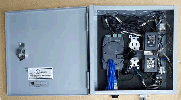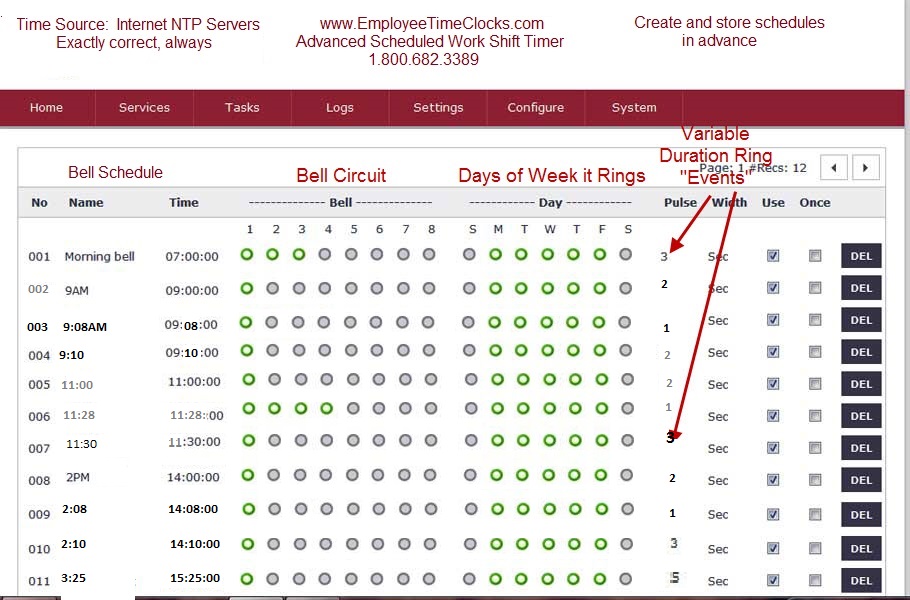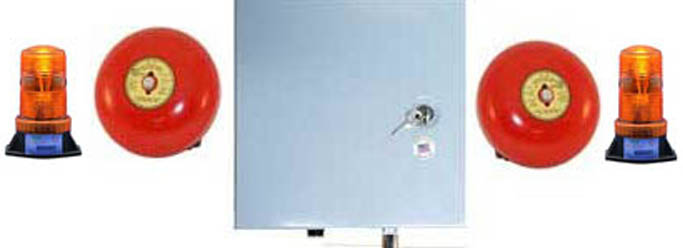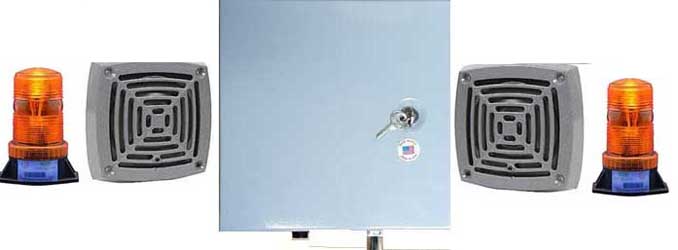|
|
 |

Network-ready scheduled work shift and class timer.
Incredibly accurate, gets the time from the NTP servers.
Turn-key solution. One plug to 110V, connect a CAT5 cable to your network
Download the software from our FTP file server and follow the directions.
Toll-Free technical support is included. This is very easy to set-up.
Lifetime USA telephone technical support is included.
Pre-wired to plug into your wall and into your network
Self-contained with 110VAC output
Up to 500 events per day, 7 days a week.
Comes wired for one circuit, upgrade to two. 110VAC is standard.
Software and schedules are in the device, not on your computer.
Synchronizes the time with the NTP (Naval) web clock
... it will ring at exactly the same time as your existing network or hosted punch clocks.
Note: This is our original prototype. 12 years later, we are now shipping Version 5

Have an existing web-hosted or web-time (NTP SERVER) based time and attendance system?
You can point this to the same NTP time source, they would then be perfectly synchronized.
Scheduling work shift timer software for up to two circuits. Use one, or use both.
Set as many times as you want every day (even by the second)
Set up as many schedules as you want, including upcoming schedules and one-time events
Synchronizes with the online atomic clock, via the NTP servers

Click to read about the Linix technology behind our netbell - article one
Click to read about the Linix technology behind our netbell - article two
Linux operating system, housed in the bell/scheduling module
Accessible by Network connection only
Two separate circuits, use one, or use both
Box: Self-contained pvc junction box
Dimensions: 6" x 6" x 4"
Approximate installed weight: 4 lbs
110VAC CAT5 ethernet connection
Made in USA
Works with tone generators.
Designed to be connected to your existing system, or add ours!
Suggested installations:


Connect up to twelve 110VAC bells or seven 4" 110VAC buzzers, per circuit
This is an evolving technology. The core system occasionally gets enhancements.
When you order from us, you will be getting the most current version.
The wiring keeps getting simplified
Our inventory is fresh, it turns over fast. You get the latest version:
In addition to 110VAC, it now supports 24VAC low voltage systems.
Low voltage means you should not have any issues with fire code. No conduit required.
In large installations (100 x 100' and larger), or machine shops, more bells do not make it louder. It makes it easier to hear. Each bell can only go to a maximum of 102DB. Multiple bells are no louder, they are just more easily heard through all the noise.
FYI, when you see car and bike horns (on Facebook, for example) promising 150, even 300DB, know that one, that is a like, and two, that is physically impossible. Google it if you have any doubt.
From ChatGBT:
The loudest sound that can be heard at sea level is theoretically around 194 decibels (dB SPL). Here's why:
Why 194 dB SPL is the limit at sea level:
-
Sound is a variation in air pressure.
-
At 194 dB SPL (Sound Pressure Level), the pressure variation is equal to atmospheric pressure (approximately 101,325 Pascals or 1 atmosphere).
-
Beyond this, sound waves turn into shock waves because the negative pressure part of the wave cannot go below a vacuum.
-
This limit is sometimes called the "sound barrier" for air pressure at sea level.
Real-world examples near that limit: